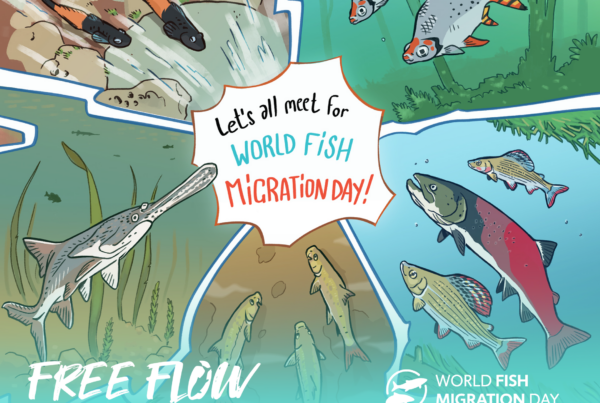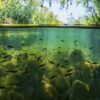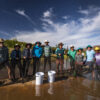As we prepare for World Fish Migration Day 2024, and its Free Flow theme, we at World Fish Migration Foundation have started ‘Free Flow Champions’, an initiative aimed to raise the profile of people championing freer flowing rivers. Our champion in January was the Watershed Interventions for Systems Health (WISH) project!
The Watershed Interventions for Systems Health (WISH) project represents a collaborative effort involving multiple Oceanian universities and local as well as global institutions. WISH aims to enhance water quality in deteriorated watersheds and reduce the outbreaks of water-related diseases in the Fiji Islands. By implementing effective watershed management strategies, WISH not only contributes to the well-being of Indigenous communities reliant on these water sources but also fosters biodiversity. A healthy watershed creates better conditions for fish migration and strengthens coral reef’s resilience. In this interview, Aaron and Stacy, co-designers of the WISH project, together with other members discuss with us how the project started and got implemented in the Fiji Islands.
You are a collaboration called WISH, what is that all about?
[Aaron, WISH co-designer] The history of the Watershed Interventions for Systems Health (WISH) approach began more than 15 years ago, when a number of us were involved in a collaboration to scale the implementation of Ecosystem-Based Management (EBM) in Fiji. Part of this work was researching to learn about the connectivity of Fiji’s land and sea systems and how human activities were disrupting this connectivity. With my small team at Wetlands International – Oceania, our surveys of freshwater rivers from watersheds around Fiji revealed that 98% of all fish found in Fiji’s freshwater have to migrate out to the ocean at some stage in their life cycle – which is an incredibly high degree of connectivity! Working with the Wildlife Conservation Society and other academic partners, we identified that the most disturbed watersheds in Fiji’s main islands were associated with reduced diversity and abundance of fish in the rivers. This was tied to factors like loss of forest cover, overhanging culverts that blocked fish migration, and the presence of non-native species, with highly mobile species, such as amphidromous gobies and gudgeons, most significantly affected. [Stacy, WISH co-designer] We made a great deal of effort to present this information back to communities. In Fiji, as in many Pacific Island countries, Indigenous [iTaukei] people have tenure over most of the lands and thus have a great say over how they are used and managed. We wanted to inspire behaviour change to look after the forest and rivers to protect biodiversity downstream. We created comic books, performed puppet shows, nominated Goby Youth Ambassadors to do stream monitoring, and worked with communities at the district level to create EBM plans. While there was some initial interest in making rules to protect the environment, ultimately telling people they were losing their fish was not enough to influence behaviour change at the scale required to affect downstream impact. Then came the floods. [Aaron] From about 2009, then again in 2011, and 2012, Fiji was hit by large flooding events following tropical cyclones and low-pressure systems. We started seeing peaks in waterborne bacterial diseases like typhoid fever and leptospirosis that lagged the flooding events by several weeks to a couple of months. Anecdotally, it seemed like the disease outbreaks were occurring downstream from highly degraded watersheds. [Stacy] Aaron and I spent the next seven years trying to raise funds to find out if the same upstream land use and land cover changes that we know affect fish were also associated with disease outbreaks. After multiple donors turned us down, Aaron closed down the Wetlands International – Oceania office in Fiji to undertake a Ph.D. to try to uncover the environmental drivers of typhoid in Fiji. He found them – and in fact, they operate at multiple scales within the watershed. Thus, the idea for WISH emerged. Aaron was able to raise funding from the Australian Government’s Indo-Pacific Centre for Health Security to lead a research-action approach to watershed management to reduce the risk of leptospirosis, typhoid and dengue (“LTDs” – or Fiji’s three plagues), while I was able to raise funding with the Wildlife Conservation Society through Bloomberg Philanthropies’ Vibrant Oceans Initiatives to undertake watershed management to improve downstream freshwater and marine ecosystem condition. We stacked the projects geographically, combined teams and WISH Fiji was born.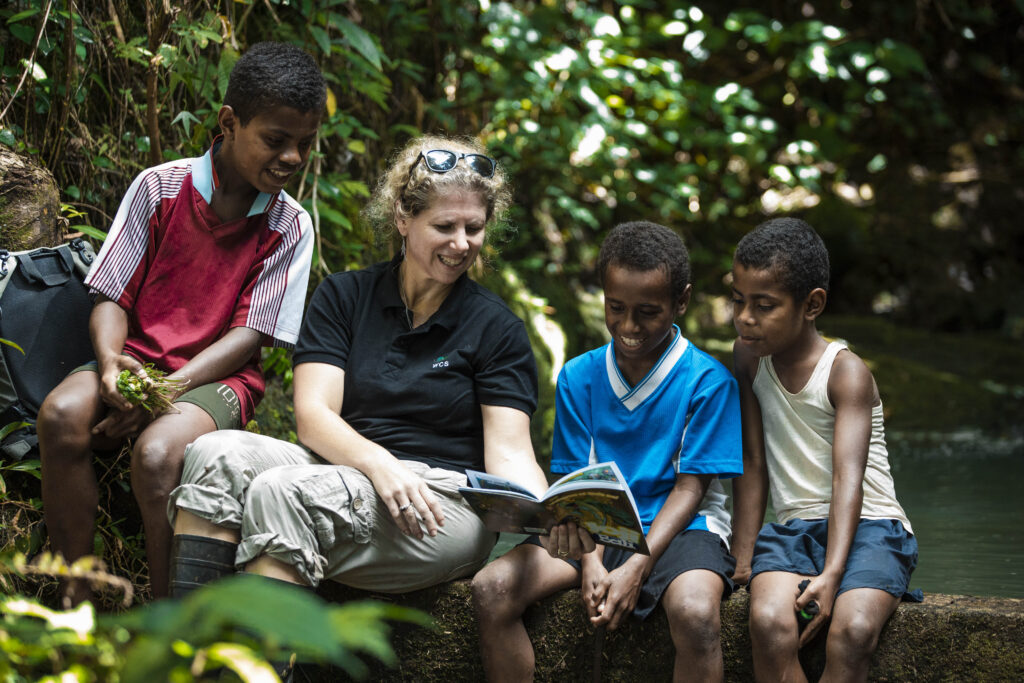
“The Adventures of Joji Goby” comic book (©ZoomFiji).
Why did the project focus on watershed management when there are coral reefs around?
[Stacy] Corals and other reef organisms are very sensitive to the impacts of various pollutants in river runoff, including sediments, nutrients, pathogens from wastewater, chemicals, heavy metals, plastics, and pharmaceuticals. There is now a very large body of evidence demonstrating how human activities within watersheds elevate these pollutant loads in river runoff, thus managing those human activities at scale is very important for improving water quality for the health of downstream freshwater and marine ecosystems, as well as the health of people.What is a memorable story from the different interventions WISH has implemented?
[Mia, WISH watershed officer] In the Bureta River watershed, almost everyone from the three villages of Naviteitei, Nasaga, and Tai got involved in the work to install a new dam around the village water source. Men, women, and youth walked up the steep hill and even made a picnic out of it. The priority action for these sites to reduce disease risk was to enable a supply of clean water. The dam was located on a tiny tributary of the Bureta River, running normally at not more than a trickle, so the placement of the dam was unlikely to interrupt any fish migration. Simultaneously, because people from the whole district recognized the importance of clean river water for environmental and public health, they agreed to create an upstream forest-protected area around the headwaters of the main river. The villagers easily recognized that nature conservation can be a health intervention. Also, because iTaukei [Indigenous] Fijians have a very strong attachment to the land that they own and the sea where they have use and access rights, there is a strong desire to look after the environment to honour the ancestors and ensure that future generations will enjoy the same benefits.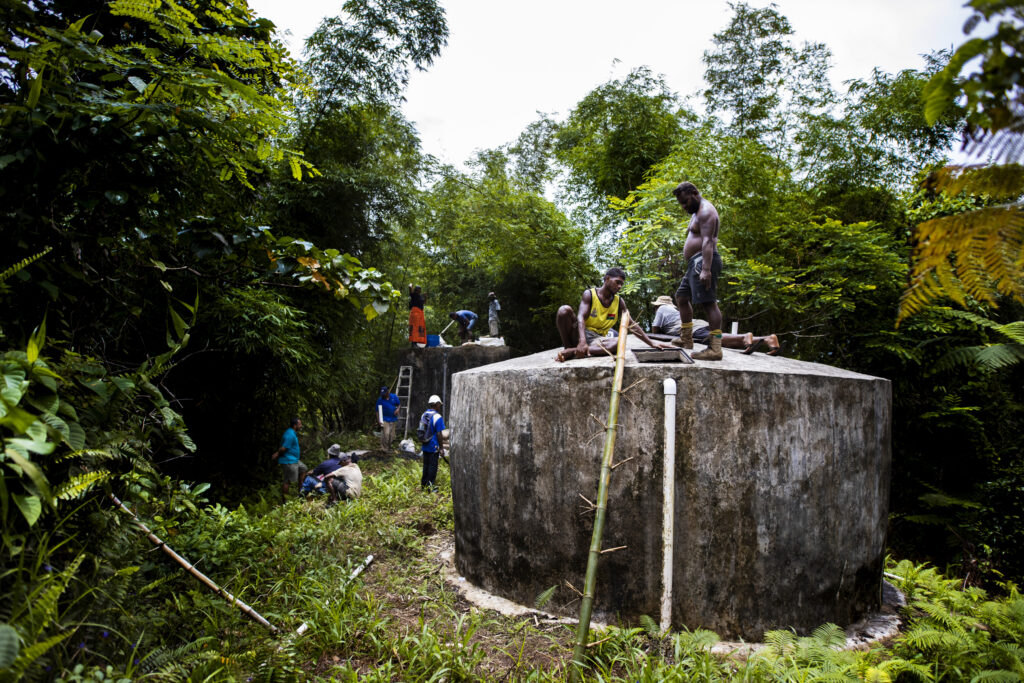
Water infrastructure improvements in Bureta River watershed (©ZoomFiji).
What is the most surprising or interesting thing you all have learned through WISH?
[Anaseini, WISH data manager] It is challenging to bring together all the right information in the right format to document the links between environmental health and public health. [Timoci, WISH project manager] But there are some data out there that show these linkages. It has been interesting to learn more about Aaron’s research documenting how riparian habitat fragmentation and other indicators of environmental degradation at the watershed scale were associated with typhoid incidence and how different climate and landscape variables (e.g., livestock density) were previously associated with risk for leptospirosis in Fiji. [Alice, WISH regional coordinator] I am new to the WISH project and the Pacific region. I have been surprised at the strong willingness of communities to take action to look after their environment. [Stacy] I was pretty surprised that our follow-up monitoring indicated reductions in Escherichia coli, a bacterial indicator of fecal contamination, from river water and drinking water at some sites, particularly given how difficult it was to implement different interventions during the period when there were restrictions on movement in Fiji due to COVID-19. That said, simple things like replacing broken pipes and tethering livestock to keep them out of drinking water sources can potentially be quite effective in terms of reducing fecal contamination. [Aaron] It’s been amazing to see similar patterns hold at different scales in the landscape. Our gene sequence and microbial community data suggest that, just as what we observe at the landscape scale, in degraded systems, microbial communities also have less diversity and more potential for species that are weedy and/or cause disease. It suggests there may be some universal ordering principles that operate regardless of scale.What have communities been most proud of about WISH initiatives?
[Timoci] In Navunikabi village in the Upper Navua watershed, the community members are really proud that they are seeing fewer incidences of disease. They used to anticipate that there would be an annual “quarantine” period during the rainy season between November and April. This has not happened since the WISH project began, as people have not been getting sick. [Waisea, WISH watershed officer] In Driti village in the Dama watershed, the women who go out fishing in the rivers to catch prawns have said that they are starting to see a return of sici [freshwater snails] that they had not seen in a long time.What is one key thing people should know about WISH and freer flowing rivers?
[Aaron] Freer flowing rivers are like veins. If they are blocked, you lose life, nutrients, and richness. A free-flowing river is like a cholesterol-free vein – more flexible and more able to respond to natural variability.What are WISH partners planning for #WFMD2024?
[Stacy] I think it’s time to bring back the puppets and adapt our Adventure of Joji Goby story to also include some information about the public health risks of degraded watersheds.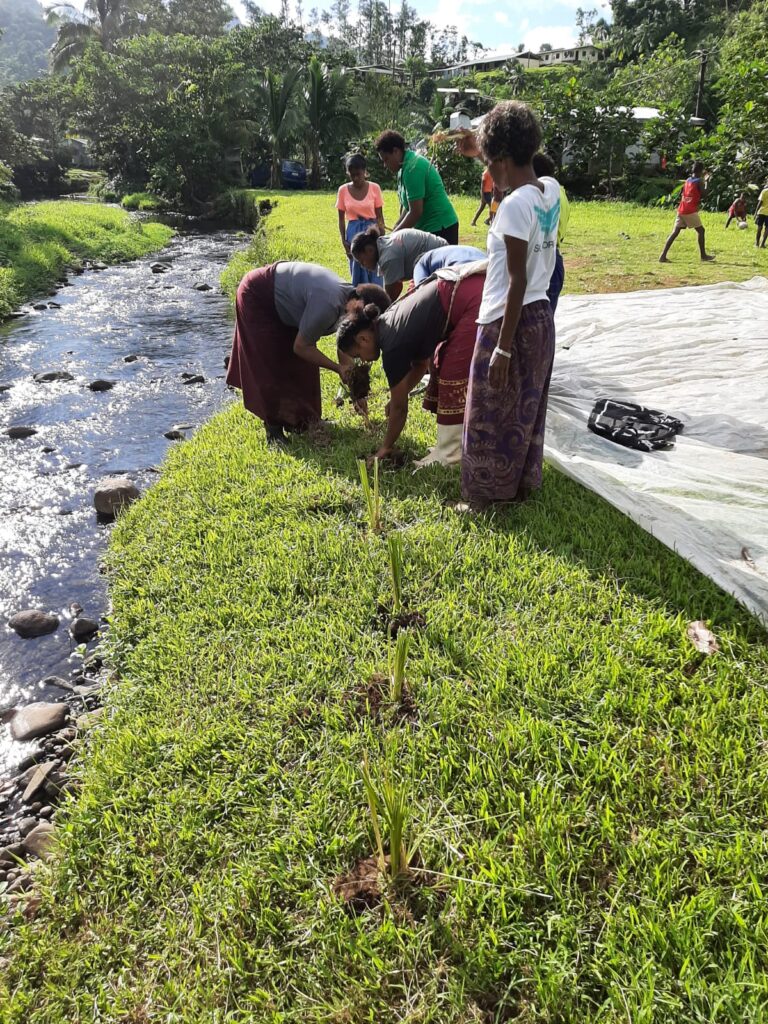
Streambank stabilization with vetiver grass within the Bureta River watershed (©Mereia Ravoka/WCS).
Read more Free Flow Champions and find inspiration for your World Fish Migration Day 2024 event.





